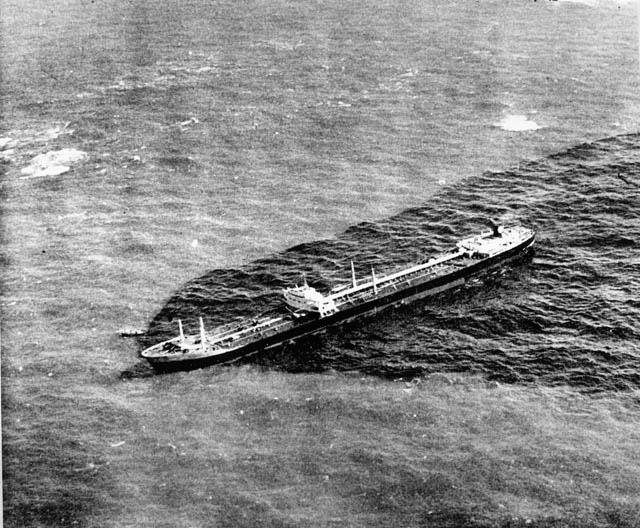Torrey Canyon
The 970 foot long suexmax tanker Torrey Canyon, bound for Milford Haven, ran aground on Pollard Rock, Seven Stones reef between Land’s End and the Isles of Scilly on March 18, 1967. The tanker with its cargo of 119,328 tons of crude oil from Kuwait became the largest shipwreck and oil spill to that date.
The Torrey Canyon was travelling around 17 knots at the time she struck the reef resulting in six of her 18 storage tanks to be ripped open. An 8 miles slick formed around the wreck and some 20,000 tons of crude oil was released on the first day. By the following day, another 10,000 tons of crude was released with the oil slick increasing to over 18 miles long. A strong westerly wind pushed the oil slick to the east and to the south into the English Channel. The oil slick would eventually reach the the southern shores of Cornwall.

By March 26, the Torrey Canyon had broken-up on the reef by the heavy seas. When the tanker broke her back, an estimated 45,000 tons of oil was released into the sea. The resulting oil slick would be blown southeasterly until it washed onto the west coast of Brittany.

With no hope of salvage, authorities decided to bomb the shipwreck on March 28 in the hopes to ignite the oil. Aircraft from RNAS Lossiemouth dropped some 42 bombs, weighing upwards to 1,000 pounds, on to the wreck. The RAF also dispatched other aircraft to drop cans of aviation fuel to help the oil burn. The initial fire set off by the bombs did not stay alight for long. The fires were extinguished by the high tides. More bombing and fuel was dropped onto the Torrey Canyon the following days until the vessel sank in 30 meters of water.

The environmental impact from the Torrey Canyon impacted the coastline of Cornwall, France, Guernsey and reached as far as Spain. The coastline would be cleaned up for the following years , but some 15,000 birds perished. To compound the effects, the chemicals used by authorities to dissipate the oil slicks were toxic. Thus, the chemicals harmed the plants and animals doing further damage to the marine ecosystem.

An investigation into the Torrey Canyon found the master of the vessel was to blame for the accident. He had taken a shortcut to save some additional time to reach Milford Haven. Additionally, the investigation revealed that the helmsman at the time was not aware that the vessel’s autopilot was engaged. Thus, he was unable to make the necessary turn through the channel to avoid striking the reef.
